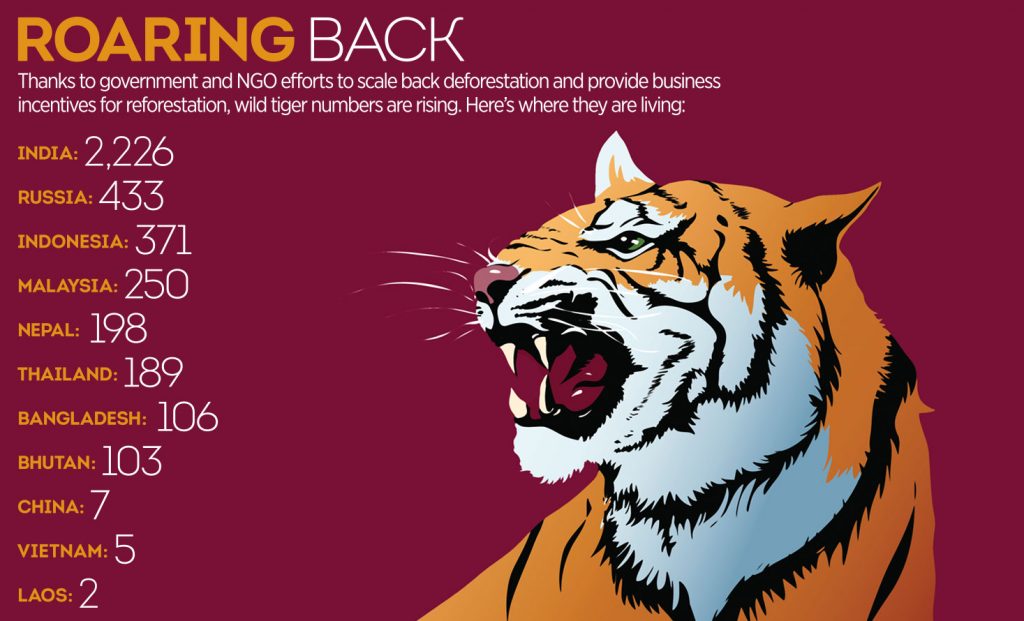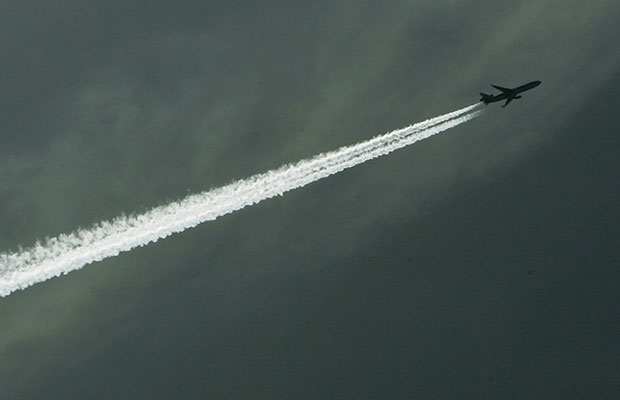Big oil’s big challenge
Is Big Oil getting itself into deeper and hotter water?
Is Big Oil getting itself into deeper and hotter water?
Despite BP’s disaster in the Macondo well in the Gulf of Mexico zone known as Deepwater Horizon, a disaster that cost 11 lives and has burdened BP with something like $40bn in clean-up costs, compensation and penalties, never mind loss of earnings and damage to reputation, the major oil and exploration companies continue to shift their focus to ever more challenging zones of the world’s oceans. They do so in full knowledge of all the attendant risks to themselves, investors, employees and the environment.
In fact, the pace of deep-water exploration has accelerated since last April’s commercial and environmental catastrophe in the Gulf, and Big Oil is jockeying for position in remote areas that become increasingly lucrative with every dollar increase in the price of a barrel of oil. Next stop is the Arctic, as almost every week the industry moves a step closer to what energy analysts say is an inevitable deep-water future.
The reason? As energy analysts universally agree, the world needs as many hydrocarbons as can be found, however deep down they’re buried. Although a new era of renewable energy awaits in the form of wind and solar power, biomass and anything else that can replace oil, gas and coal, the conversion to cleaner power is in its infancy.
“For the foreseeable future, a society powered by renewables remains a utopian dream,” argues Mathijs van Gool in European Energy Review, noting that the EU’s mandate for 20 percent of energy to be derived from renewables by 2020 is somewhat ambitious. Others say it’s pie in the sky.
Although the European Commission has expressed grave misgivings about deep-sea wells while stopping short of adopting a formal ban, the supply of oil from deep below the ocean floor is considered essential. “Some 70 percent of new oil production will come from offshore,” explains Dan Howlett, HSBC’s head of structured finance whose firm, like other large institutions, bankrolls its fair share of this kind of exploration. “And half of that 70 percent will come from deep water.” To put it plainly, the easy onshore or shallow-water pickings for Big Oil have been plundered.
So, while clean-tech energy gets on its feet in the coming decades, the deep-water industry is plugging the gap. In early 2011 for example, in a clear indication of where future profits lie, UK-based Ensco made a $7.3bn purchase of US rival Pride International in cash and stock that created the world’s second-largest offshore drilling company. The enlarged company boasts 21 deep-water platforms, some of them classified as ‘ultra-deep’ that will likely see service in the fastest-growing exploration zones – Brazil and West Africa.
Premature
Also in early 2011, two of the main culprits in Deepwater Horizon – BP and Transocean, its contractor on the fatal rig – have quickly shrugged off the disaster and moved to pastures anew. In February, BP did a $7.2bn deal with the Ambani family’s giant Reliance Industries to go exploring for oil and gas off India’s coastline. This is in the so-called KG D6 deep-water blocks, some 23 in total that are spread across a vast area of 270,000km2 of ocean. With unintentional irony, Reliance insisted in late February that BP “provides the best technology in deep-water drilling and production”.
The deal is yet another reminder of how desperate for energy fast-growing nations such as India really are. According to Energy Outlook, BP’s own survey of future energy needs, India’s consumption of energy is likely to grow by 115 percent over the next 20 years, which is typically Big Oil’s time frame. And that’s after rocketing by 190 percent in the last 20 years.
There’s an infrastructure going on too. Transocean, which suffered its share of the blame for Macondo, has signed a $400m contract with Keppel’s Singapore shipyard to build two giant rigs that will house 150 personnel and are capable of operating in 350-foot deep waters while building wells 35,000ft below the seabed. Transocean’s overall contract is with a division of Chevron to explore off Thailand.
The rigs are getting bigger all the time. Under construction in China’s Liaoning province is what is claimed to be the biggest offshore rig yet, a $500m monster to be known as the Dalian Pioneer. The unit will live up to its name – it’s capable of operating in waters up to 10,000ft deep “at a high level of efficiency and safety”, according to a statement from China’s energy authority.
Clearly, predictions made in the wake of the Deepwater Horizon spill about the imminent death of drilling at such vast depths are premature. As recently as mid-2010 while BP was still fighting the Macondo blow-out, some energy analysts argued that the stratospheric costs of exploring for oil in these unchartered territories would quickly become unjustifiable as the price of a barrel declined steadily from the peak of $145 in 2008 in the middle of the financial crisis. And as prices fell back to $60 a barrel, some experts believed profits would become relatively marginal at best.
However, if there was any doubt about the industry’s increasing deep-water focus, it was dispelled in February because of the turmoil in the oil-rich Middle East that once again drove prices above $100 a barrel. Thus the odds have swung heavily back in favour of the deep-water branch of the industry.
It all comes down to scarcity. “Current production levels will decline and prices will rise,” HSBC’s Howlett said late last year. His far-flung team – based in Calgary, Houston, Aberdeen and Dubai – helps provide the debt capital that enables companies to find the oil on which nearly all modern economies rely. He predicts that prices will hover around $75-$100 a barrel over the next few years. And in general, a perusal of the research of the oil majors shows it to be in broad agreement.
Management failures
The subsequent enquiries into the Macondo blow-out show that, as rigs are anchored in increasingly deep waters, the risks have multiplied but without operators adopting management practices to match them. Deepwater Horizon was an accident waiting to happen.
The Oil Spill Commission appointed by President Obama was composed of a cast of stars, a veritable dream team of oil, environmental, engineering and other experts. And the report it produced was the most thorough, definitive and far-reaching investigation undertaken so far into deep-water drilling. It has become required reading for the entire deep-water fraternity.
And after holding six public hearings in the aftermath of the blow-out, after summoning scores of experts to give testimony, after (unusually for a commission) conducting its own “listening” tours in the Gulf region, its conclusion was that the disaster was due to a series of technical and managerial deficiencies by the operators – BP, Transocean and Halliburton – as well as by various government agencies. Indeed the official bureaucracies came in for considerable flak. In summary, hardly any organisation, commercial or public, emerges with much honour.
The disaster – the worst oil spill in American history – was not only “preventable”, the commissioners practically guaranteed there would be repeat performances unless the US deep-water industry tidied up its act. “Similar large-scale, future disasters [were] likely without action by Congress, the administration and industry”, the report warned. In words that rang throughout the tower blocks of Big Oil and the downstream industry, senior commissioner William K. Reilly, 71 year-old former founder of the WWF and administrator under President Bush of the powerful Environmental Protection Agency, observed:
“Our investigation shows that a series of specific and preventable human and engineering failures were the immediate causes of the disaster. But, in fact, this disaster was almost the inevitable result of years of industry and government complacency and lack of attention to safety. This was indisputably the case with BP, Transocean, and Halliburton, as well as the government agency charged with regulating offshore drilling – the former Minerals Management Service. As drilling pushes into ever deeper and riskier waters where more of America’s oil lies, only systemic reforms of both government and industry will prevent a similar, future disaster.”
As a wrap on the risks, these four sentences can hardly be bettered.
A litany of errors
But what went wrong? Practically everything, it seems. The investigation, which was conducted during a complete shut-down on drilling in US waters more than 500ft deep, turned up a series of mistakes that were made under admittedly enormous pressure as well as alarming deficiencies in training and preparation of personnel for what is very much pioneering exploration.
So many technical, judgemental and managerial errors were committed that they are too numerous to catalogue (the full report is 381 pages long). Suffice it to say, once it was known there were problems with the well, the main failures occurred in the process of attempting to seal the rogue well with slurry cement. Although this was manifestly a challenging task, the inability of the crew of experts to get it done illustrates how unprepared the industry was for this kind of event.
And so were the regulators. Having grown up with shallow-water drilling, government organisations were simply not up to the job of supervising the industry as it shifted further and further offshore. “Neither inspectors on the front lines nor senior Interior Department officials in charge of the Minerals Management Service had the experience or training to oversee deepwater offshore drilling”, the report maintained.
Damningly, the commissioners also found that the industry did its best to block the introduction of tougher regulations that may have prevented the disaster, apparently because they would have added extra costs and delayed production. “The Department of the Interior lacked sufficient in-house expertise to enforce existing regulations, and was unable to impose more stringent safety regulations due in large part to industry resistance,” the report summarised.
The result was that when the well did blow on the night of Tuesday, April 20, 2010 – a day that will be burned on the corporate memory of BP, Transocean and Halliburton – no party in industry or government was up to the task of containing it. Despite predictions, the report didn’t turn into a witch-hunt of BP as the only foreign company involved. (Both Transocean and Halliburton are long-established American groups). Instead it concluded the disaster was “not the fault of a single rogue company” (namely, BP) but was the consequence of a collective failure. “At the time of the blowout, BP – and industry more generally – had no proven options for rapid containment in deep water other than attempting to close the blow-out preventer,” the report said.
As the report repeatedly makes clear, nobody really knew what they were doing. As the situation deteriorated, the parties tried one thing after another in little more than the hope it just might work.
Shockingly, Big Oil had done little to improve its emergency procedures since the Exxon Valdez spill more than 20 years before, an ecological disaster off Alaska that demonstrated beyond any doubt the industry’s relative casualness to the risks it brings to pristine and sensitive environments. “Neither industry or the government has made significant investments in spill-response research and development, so the clean-up technology used following the Deepwater Horizon spill was largely unchanged [from Exxon Valdez in 1989],” the commissioners found.
About the only good thing the report could establish was that an even worse disaster could have happened at Deepwater Horizon, even though it affected the health of residents and continues to do so, destroyed fish and wildlife, is still destroying wetlands at the rate of a football field every 38 minutes, and seriously damaged tourism and the fishing industry, perhaps beyond repair. The “clean-up” is in name only.
However Armageddon was indeed averted. “At one point, industry experts feared that a significant portion of the 4.6bn gallon oil and gas reservoir beneath the sea floor could be released into the Gulf,” the commissioners found in a chilling observation that says too much about the too little that Big Oil knows of the consequences of deep-water drilling. Or, more specifically, American Big Oil. Time and again, the president’s commissioners refer to the much more professional and strict practices of the industry in Norway and Britain’s North Sea. By comparison, the US sector sometimes sounds like a redneck industry straight out of the wildcatting days.
Unsurprisingly, the report is concerned about the possibility of similar disasters in or near US waters, noting that deep-water exploration is moving into the Arctic and neighbouring seas. For instance, Mexico and Cuba are planning operations in the Gulf.
Nobody’s denying that the human tensions and scientific challenges of operating at vast depths are significant, as another prestigious report into the blow-out points out. Probably the most advanced study of the science of deep-water drilling – and indeed, of its shortcomings – this report was conducted by two of America’s leading repositories of hard sciences: the National Academy of Engineering and the National Research Council. It involved geophysicists, petroleum engineers, accident investigators, specialists in safety, in risk analysis, in human and organisational behaviour. Hopefully, its contents will have been devoured by the technical departments of Big Oil as they embark on voyages into deeper waters.
A technical affair
These experts focused not so much on what went wrong in the run-up to the blow-out and its immediate aftermath, as did the president’s commission, but on the scientific unknowns in this particular disaster. Principally, this was the effectiveness or otherwise of cementing what is known as the “long-string production casing [a form of tube] to prepare the well for temporary abandonment”. In short, they concentrated on what was done when the mayhem broke out.
Disturbingly, they conceded they may never really know everything that went wrong because 11 crucial witnesses lost their lives, the rig took vital records down as it sank burning into the Gulf, and the unprecedented difficulties in retrieving reliable forensic data from an incident occurring so far below the waves. However, the academicians were able to make several absolutely vital conclusions about the incident.
There were “several clear failures” in the monitoring of unwanted flows of hydrocarbons into the well. Because of the high risk to life from such an event, it’s usual for the mud-logging company, drilling contractor and operator to undertake regular checks on these flows. However BP’s own report shows that the well became “under-balanced” (dangerous leakages of hydrocarbons) without anybody knowing at first. This happened at 20:52 on April 20th, and the inflow was identified by instruments six minutes later. That is, a full 51 minutes before the first explosion at 21:49. By 20:58, a further 31 barrels of hydrocarbons were in the well. That’s 41 minutes before the fatal blast, yet nothing was done.
The committee does not say whether the disaster could have been averted at that point, but it does say that an explosion soon became virtually certain. “Once the uncontrolled flow of hydrocarbons had enveloped the deck of the rig on April 20, ignition was most likely, given the large volume of gas, the multitude of ignition sources on the rig, moderate temperature, and limited wind conditions,” it notes.
Because of the failure of what should have been automatic warnings, personnel did not have sufficient time to evacuate the semi-submersible rig.
Bafflingly, although data from the well was collected continuously and sent ashore, there was no real-time monitoring of that data back at base. If there had been, suggests the committee, these warning signals may have been picked up.
There were numerous other mistakes, some technical, others managerial:
The well was abandoned before the integrity of the cementing processes – crucial to blocking the spontaneous and devastating leakage of hydrocarbons – had been confirmed. Indeed the crew did not know that the spill was already pouring into the well and riser, bringing it to the surface.
The series of decisions leading to temporary abandonment were taken in spite of several indications of danger as confirmed by negative-pressure tests. “These decisions raise questions about the adequacy of operating knowledge on the part of key personnel,” the report said.
Despite the “markedly different fluid pressures” in the various zones in the deepest part of the well, the crew tried to cement the critical areas “in a single operational step”. The conclusion was that the different pressures on the cement required commensurate densities to cope with them. Put simply, the great forces being exerted at such depths were too great for the strength of the cement that was employed.
Too much mud was allowed to mix with the cement, corrupting its strength.
A float shoe should have been built into the bottom of the casing “as an additional barrier to hydrocarbon flow”.
The emergency disconnect system that might have saved the day “failed to operate”, as seemingly did the various alarms on the rig. This “potentially affected the time available for personnel to evacuate.”
The blow-out preventer, a standard defence against a rogue well, operated only partially and was therefore almost totally ineffectual.
There were “insufficient checks and balances” in the decision-making process over whether to abandon the well and whether it was safe to do so. In short, the crew rushed things.
All of the parties – BP, contractors, Minerals Management Service, other regulators – failed to identify, let alone correct, the accuracy of these ultimately disastrous decisions. Just as importantly, there’s no industry consensus on exactly what could or should have been done about the cement on which the successful plugging of the well so crucially depended.
Overall, the operators simply lacked a systematic approach for the management of “the multiplicity of factors potentially affecting the safety of the well, monitor the overall margins for safety, and assess the various decisions from perspectives of well integrity and safety.” They were very much flying blind.
Brink of disaster
The inescapable conclusion is that deep-water drilling, as practised in much of the US at least, teeters on the brink of disaster. Training appears perfunctory. It’s conducted mainly on the job and, if there is any formal instruction, it’s been done in one-week refresher courses every few years.
The regulators, notably the MMS, got in each other’s way. They were confused as to which body was doing what and were slow to act. Indeed the MMS had been working for nearly a decade on draft regulations for blow-out preventers, but never managed to get them done. (The MMS has since been disbanded and its responsibilities handed over to the new Office of Natural Resources Revenue and the Bureau of Safety and Environmental Enforcement.)
And yet deep-water drilling goes on apace. Apart from the Gulf of Mexico, the most sought-after deep-water reserves are off Brazil and Africa but there are others off India, China, Australia and UK. Between the Gulf, Brazil and Africa alone, there are an estimated 90bn barrels of oil and gas.
An enormous downstream industry has gathered around the coat-tails of Big Oil’s deep-water ventures, from shipyards such as Keppel to relative tiddlers such as Trico Marine Services that rents out vessels for transporting equipment to offshore rigs at $25,000-plus a day. Investors are rushing to prosper on the back of the deep-water sector such as hedge fund king John Paulson who recently bought nearly eight million shares of Anadarko Petroleum now working on nine deep-water discoveries.
The capital sums involved are towering – Anadarko spends over $5bn a year on maintaining a success rate of about 50 percent in its drilling while Andrew Gould, chairman and chief executive of oil services giant Schlumberger, estimates the industry needs to invest about $350bn in every year between now and 2030 to meet the global energy demand.
And yet the big worry is whether the industry has learned the lessons of Macondo as it starts drilling in other frontier zones such as the environmentally sacred Arctic where such blunders could be exponentially more serious than they were in the Gulf. Noting that the Arctic is an important area for future oil and gas development, the commissioners say that “additional comprehensive scientific, technical and oil-spill response research is needed.” Summarised, the industry’s not yet ready.
Although a shocked Big Oil has moved quickly to mend its fences since Macondo and improved safety practices, for instance by pooling $1bn to fund a rapid-response team for future blow-outs, what worries the commission, environmentalists and people living on the edge of these drilling zones is that America was “entirely unprepared for an inevitable disaster”, as the report explained.
The question inevitably remains: is it prepared now? Oil and Gas UK, the industry body, points out that North Sea drilling has proved environmentally safe. “The UK industry operators under a robust and fit-for-purpose regulatory regime,” explains chief executive Malcolm Webb. “Almost 7,000 wells have been drilled successfully over the last 20 years.”
Try telling that to the inhabitants of the Gulf where Big Oil is desperate to start drilling again, complaining that the ban is unfair on the dubious grounds that governments do not ban aircraft from flying just because there has been a crash.













